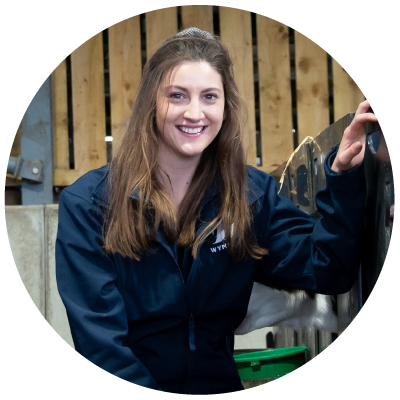With spring calving fast approaching, kickstarting one of the busiest, most demanding times of year, being properly prepared can relieve some of the stress for farmer, cow and calf.
Here are my top considerations for minimising stress of calving:
1. Dry Cow Body Condition:
- Ensuring cows are at the correct body condition score around calving is essential. Both fat and thin cows can have detrimental effects on productivity for the cow and the calf.
2. Rations/Nutrition:
- It is time to revisit the rations for both pre and post calving to maximise performance and minimise metabolic risks. Have you had your forages analysed and considered mineral profiles?
3. Vaccinations and Health Plans:
-
Vaccinating cows during late gestation increases the antibodies in colostrum for the calves. Have a clear health plan for when calves are born, whether BVD testing to pneumonia vaccinations.
4. Calving Pens:
- Are calving pens ready? Ensure that calving pens are cleaned, disinfected and ready to go. With calves being born without immunity, the hygiene of the calving pen is essential to help prevent issues, such as scours.
- Do cows have access to clean ad-lib water? A cow can lose as much as 50l of fluids during calving. Offering a fresh cow drink post-calving can help to rehydrate the cow.
- Having adequate handling facilities which are in a secure and working condition. Ideally a calving gate and headlock is recommended. This is important for both cow and person safety.
5. Good Lighting / Cameras
-
Having good light in the calving shed is essential. Before calving starts, make sure lights are all in good working order, replace any bulbs and clean covers.
-
Use a high-quality camera to keep an eye on calving cows improve attention to detail.
6. Calving Equipment
- Make sure your calving equipment, such as calving jack, ropes, is cleaned, in good condition and kept close by calving pen.
7. Colostrum
- Make sure colostrum can be cleanly and quickly harvested from the cow. Make sure calves with only a known health status are fed to calves, to minimise disease risk. Keep some sachets of artificial colostrum on hand for emergencies or to top up colostrum quality… Look for 100% colostrum products.
- Whether using a teat or tube, always ensure the equipment is clean to prevent passing bad bacteria to the calf.
8. Calf Shed
- Make sure calf pens are cleaned, disinfected and ready to go. Ensure all feeding equipment is clean and in good condition.
- Keep stocks of electrolytes on hand. Whether calves are refusing a feed to sick and scouring, hydration is essential.
9. Staff and protocol
- Having staff that know the protocols inside and out is essential. From calving cow management to colostrum and calf feeding, ensuring the same protocols are carried out the same way every time maximises consistency and optimises efficiency and productivity.
- Having a clear rota allows staff to have a break and rest and share the workload.


TIP: If you need any assistance creating protocols, contact a member of the Wynnstay Calf Team for help and advice.
10. Grazing Rotation
- Ensure paddocks are well mapped out, well fenced with clean water access.
- Provide good shelter for young calves.











